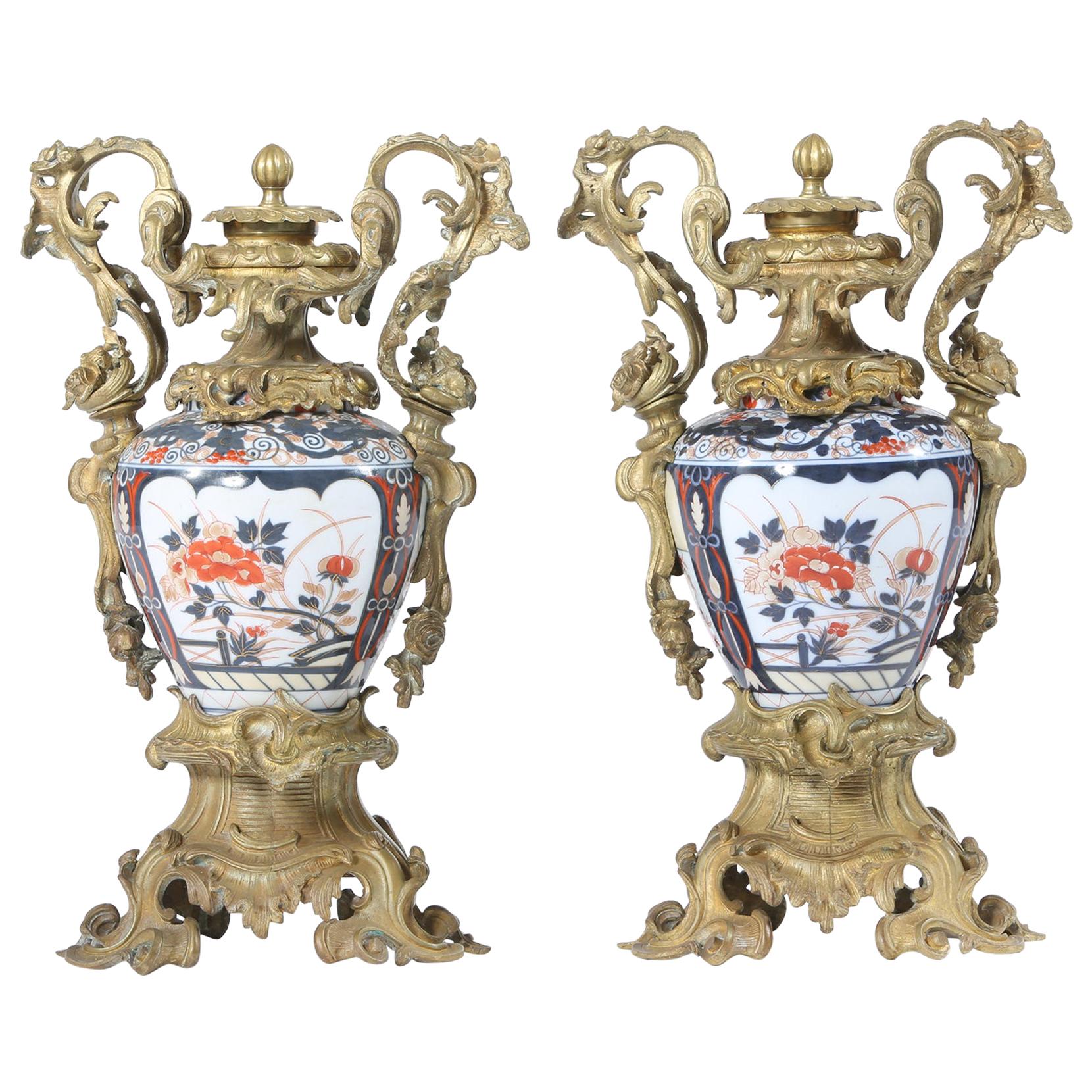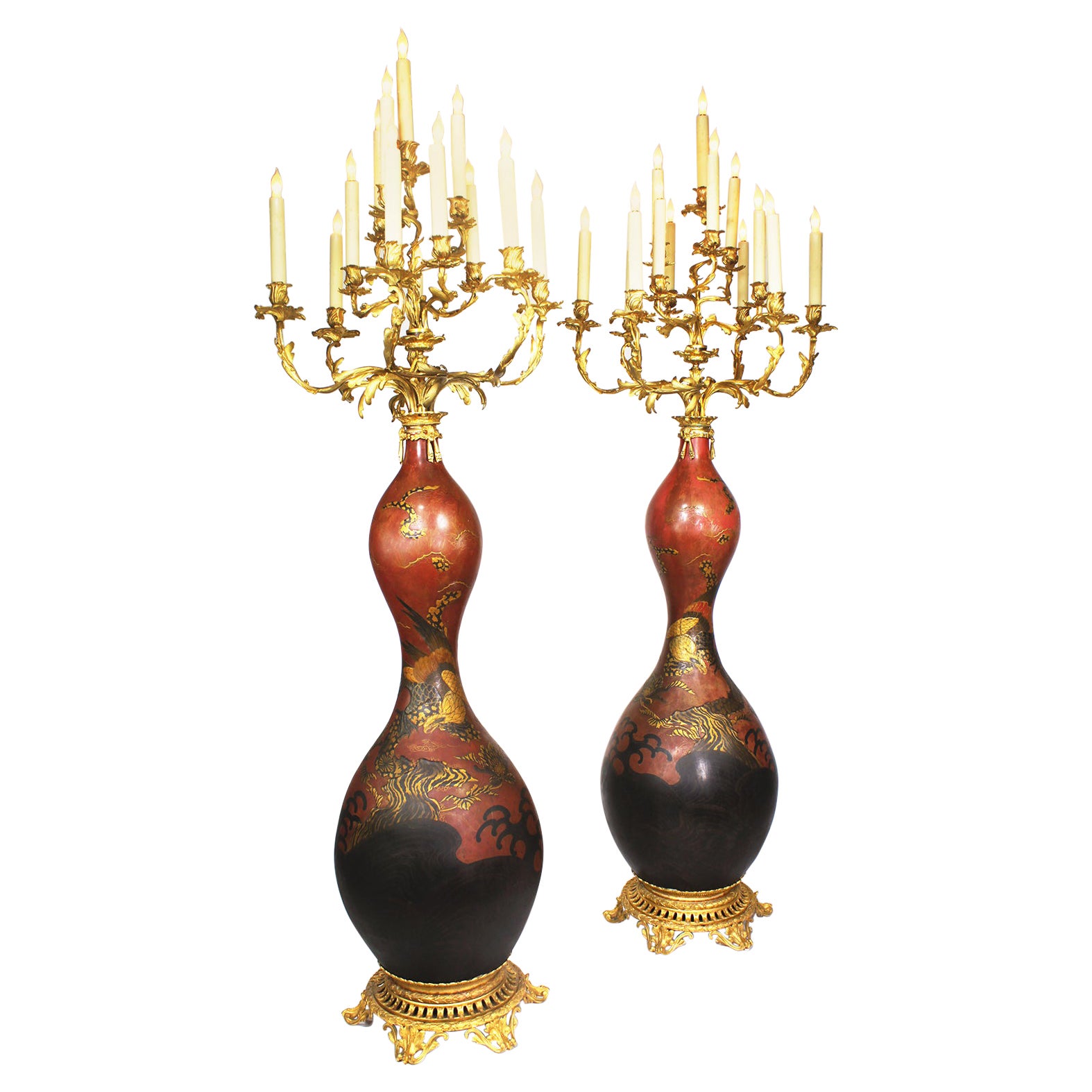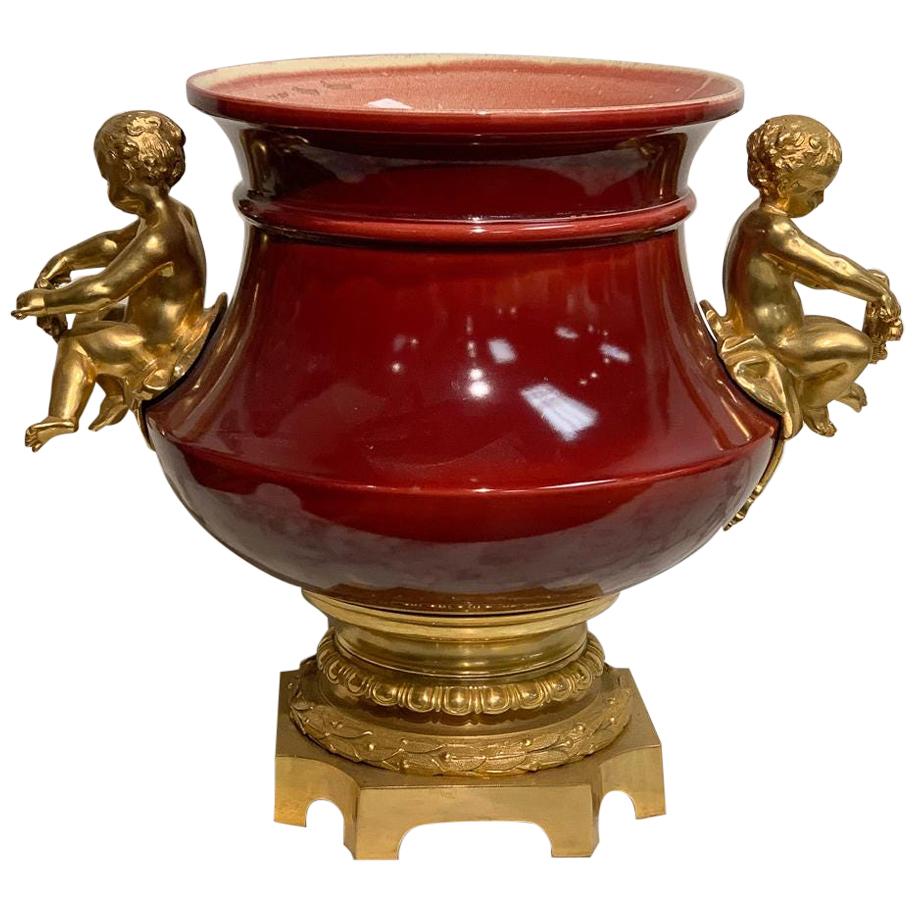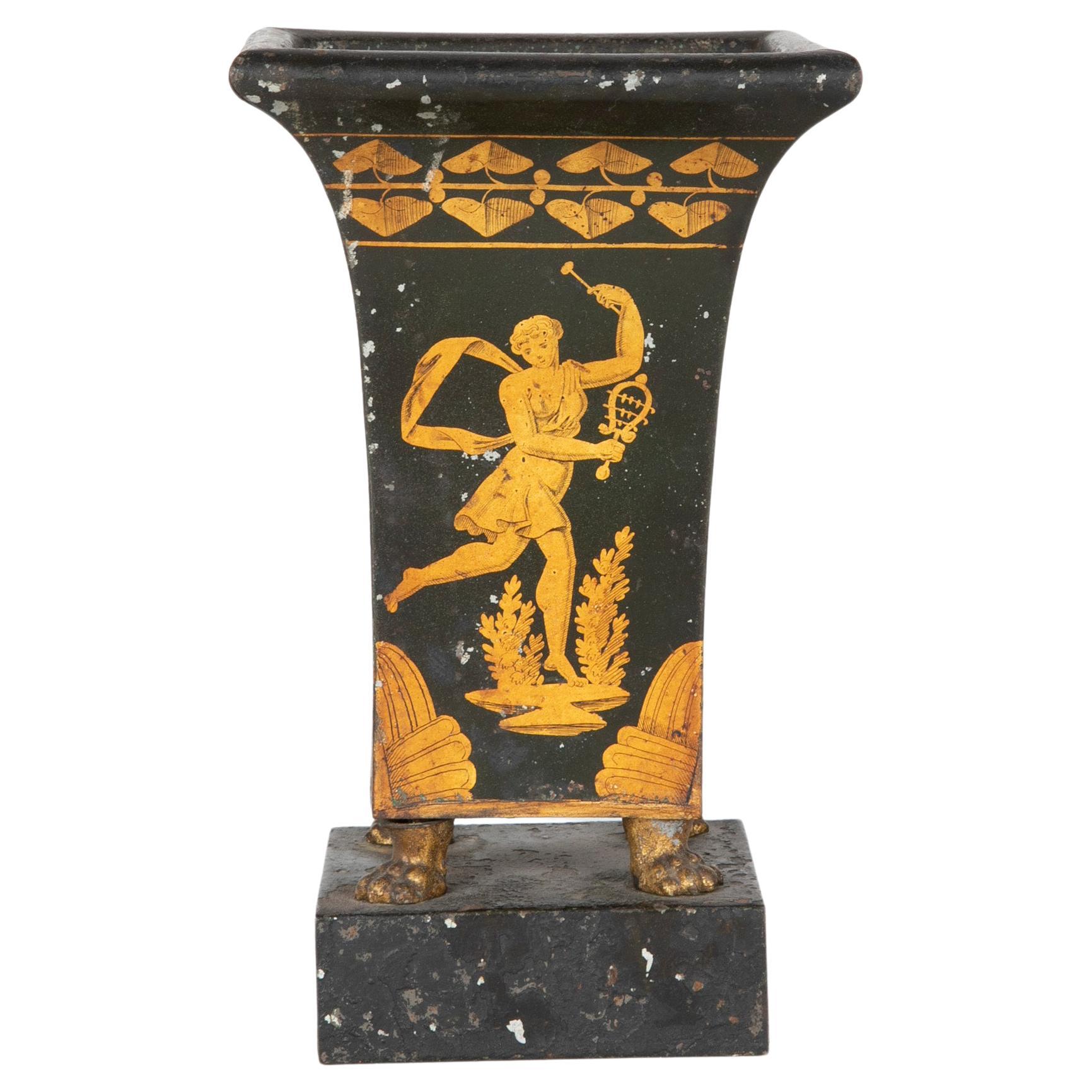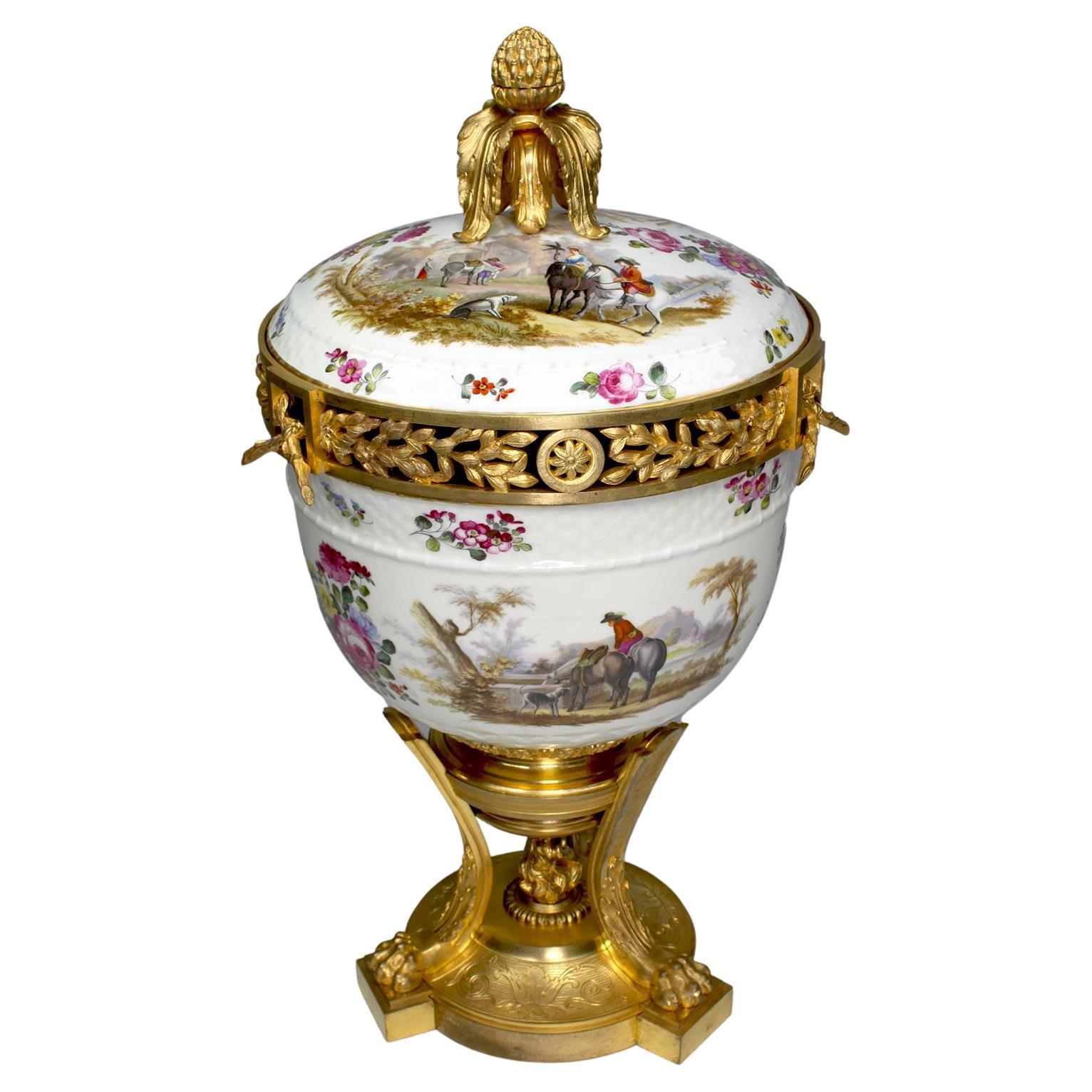Items Similar to Fine 19th Century French Gilt Bronze and Imari Porcelain Cachepot
Want more images or videos?
Request additional images or videos from the seller
1 of 7
Fine 19th Century French Gilt Bronze and Imari Porcelain Cachepot
About the Item
A fine and large 19th century French gilt bronze mounted centerpiece with a Imari porcelain decorated bowl. Fine quality.
- Dimensions:Height: 16 in (40.64 cm)Width: 16 in (40.64 cm)Depth: 12 in (30.48 cm)
- Style:Louis Philippe (In the Style Of)
- Materials and Techniques:
- Place of Origin:
- Period:
- Date of Manufacture:1880
- Condition:Wear consistent with age and use.
- Seller Location:Dallas, TX
- Reference Number:1stDibs: LU873232071162
About the Seller
5.0
Vetted Seller
These experienced sellers undergo a comprehensive evaluation by our team of in-house experts.
Established in 1986
1stDibs seller since 2009
70 sales on 1stDibs
Typical response time: <1 hour
- ShippingRetrieving quote...Ships From: Dallas, TX
- Return PolicyA return for this item may be initiated within 3 days of delivery.
More From This SellerView All
- 19th Century French Flambe Glazed Oxblood Centerpiece with Fine Gilt BronzeBy Luneville FreresLocated in Dallas, TX19th century French Flambe glazed and nicely cast gilt bronze mounts. Marked Luneville, see photos. Very good condition. Measures: 15 high x 17 wide and opening is 11 inches wide.Category
Antique Late 19th Century French Louis Philippe Urns
MaterialsPorcelain
- 19th Century French Empire Malachite and Gilt Bronze CenterpieceLocated in Dallas, TXFine 19th century French Empire malachite and gilt bronze centerpiece. Cut crystal top bowl .Fine mercury gilt bronze sphinx's.Category
Antique Late 19th Century French Empire Planters, Cachepots and Jardinières
MaterialsMalachite
- Early 19th Century French Charles X Gilt Bronze UrnLocated in Dallas, TXEarly 19th century French Charles X bronze doré classical urn on a stair stepped griotte marble base. Finely cast.Category
Antique Early 19th Century French Charles X Urns
MaterialsGilt Metal
- Very Fine 19th C French Empire Gilt Bronze Plateau with Mirrored CenterLocated in Dallas, TXA fine 19th century French Empire decorated plateau. Mirrored center panel. Fine gilt bronze decorated detail with leaf and Empire details.Category
Antique Late 19th Century French Napoleon III Garniture
MaterialsBronze
- Fine 19th Century French Patinated and Gilt Bronze Floor LampLocated in Dallas, TXA fine patinated and gilt bronze floor lamp with patinated cherubs playing instruments. Custom wired and shaded.Category
Antique Late 19th Century French Louis Philippe Floor Lamps
MaterialsBronze
- Fine Pair of 19th Century Gilt Bronze Vases by Auguste MoreauBy Auguste MoreauLocated in Dallas, TXPair of gilt bronze vases by Auguste Moreau, c1880 late 19th century, around 1880,great condition, found in a NYC wrapped in newspapers in a closet, just terrific condition, pa...Category
Antique Late 19th Century French Belle Époque Vases
MaterialsBronze
You May Also Like
- 19th Century Pair / Gilt Bronze Mounted Imari Porcelain VasesLocated in Tarry Town, NYEarly 19th century pair of gilt bronze mounted imari porcelain decorative vases or urns. Each urn is in good antique condition with minor wear consistent...Category
Antique Early 19th Century European Urns
MaterialsBronze
- 19th Century Porcelain CachepotLocated in Charlottesville, VAA chinoiserie decorated cachpot. It has original saucer. Made in 19th Century.Category
Antique 19th Century European Planters, Cachepots and Jardinières
MaterialsCeramic
- Pair 19th Century Japanese Imari Porcelain & Gilt-Bronze Torchere CandelabraBy Imari PorcelainLocated in Los Angeles, CAA fine Pair of 19th century Japanese Imari Porcelain and French Gilt-Bronze Mounted Thirteen-Light Celadon Torchere Candelabra. The bottle-shaped Japonisme vases with a Royal red background, decorated with parcel-gilt and black soaring eagles in the hunt within a forestall scene. Each Vase fitted and surmounted with a French 19th century Louis XV Style 13-Light scrolled candelabrum and all raised on a circular pierced gilt-bronze plinth. circa: 1880. Imari Porcelain (????) is the name for Japanese porcelain wares made in the town of Arita, in the former Hizen Province, northwestern Kyushu. They were exported to Europe extensively from the port of Imari, Saga, between the second half of the 17th century and the first half of the 18th century. The Japanese as well as Europeans called them Imari. In Japanese, these porcelains are also known as Arita-yaki (???). Imari or Arita porcelain has been continously produced up through the present day. Characteristics Though there are many types of Imari, Westerners' conception of Imari in the popular sense is associated only with a type of Imari produced and exported in large quantity in mid-17th century. This type is called Kinrande. Kinrande Imari is colored porcelain with cobalt blue underglaze and red and gold overglaze. The color combination was not seen in China at that time. Traditional Ming dynasty color porcelain used dominantly red and green, probably due to scarcity of gold in China, whereas gold was abundant in Japan in those days. The subject matter of Imari is diverse, ranging from foliage and flowers to people, scenery and abstractions. Some Imari design structures such as kraak style were adopted from China, but most designs were uniquely Japanese owing to the rich Japanese tradition of paintings and costume design. The porcelain has a gritty texture on the bases, where it is not covered by glaze. There is also blue and white Imari. Kakiemon style Imari is another type of Imari, but it tends to be categorized separately in Europe. History "Imari" was simply the trans-shipment port for Arita wares. It was the kilns at Arita which formed the heart of the Japanese porcelain industry. Arita's kilns were set up in the 17th century, when kaolin was discovered in 1616 by the immigrant Korean potter, Yi Sam-pyeong (1579–1655). (He may also be known by the name, "Kanage Sambei".) Yi Sam-Pyeong, along with his extended family of 180 persons, left Korea on the offer of a privileged position in Japan. This decision was made after the occurrence of certain Japanese invasions of Korea. After Yi Sam-Pyeong's discovery, his kilns began to produce revised Korean-style blue and white porcelains, known as "Shoki-Imari". In the mid-17th century there were also a lot of Chinese refugees in Northern Kyushu due to the turmoil on Chinese continent, and it is said one of them brought coloring technique to Arita. Thus Shoki-Imari developed into Ko-KutaniImari. Ko-Kutani was produced around 1650 for both export and domestic market. Blue and white porcelain continued to be produced and they are called Ai-Kutani. Ko-Kutani Imari for the export market usually adopted Chinese design structure such as kraak style, whereas Ai-Kutani for the domestic market were highly unique in design and are accordingly valued very much among collectors. Ko-Kutani style evolved into Kakiemon style Imari, which was produced for about 50 years around 1700. Imari achieved its technical and aesthetic peak in Kakiemon style, and it dominated European market. Blue and white Kakiemon is called Ai-Kakiemon. Kakiemon style transformed into Kinrande in the 18th century. Kinrande used blue underglaze and red and gold overglaze, and later some other colors. Imari began to be exported to Europe because the Chinese kilns at Ching-te-Chen were damaged in the political chaos and the new Qing dynasty government stopped trade in 1656–1684. Exports to Europe were made through the Dutch East India Company, but the designation "Imari Porcelain" in Europe connotes Arita wares of mostly Kinrande Imari. Export of Imari to Europe stopped in mid-18th century when China began export to Europe again, since Imari was not able to compete against China due to high labor cost. By that time, however, both Imari and Kakiemon style were already so popular among Europeans, Chinese export porcelain copied both Imari and Kakiemon style, which is called Chinese Imari. At the same time, European kilns, such as Meisen also tried to copy Imari and Kakiemon. Export of Imari surged again in late 19th century (Meiji era) when Japonism flourished in Europe. Thus in western world today, two kinds of Imari can...Category
Antique 19th Century Japanese Japonisme Floor Lamps
MaterialsOrmolu, Bronze
- 19th Century French Neoclassical Tole Peinte and Gilt Urn CachepotLocated in Stamford, CTA very charming early 19th century French tole peinte vase or urn with a gilt figure of a dancing maiden with one breast exposed playing a sistrum, ancient musical instrument. The ur...Category
Antique Early 19th Century French Neoclassical Urns
MaterialsTin
- Fine German 19th Century Porcelain and Gilt-Bronze Mounted Potpourri Urn VaseBy Meissen PorcelainLocated in Los Angeles, CAA very fine German 19th century porcelain and gilt-bronze mounted Potpourri Urn-Vase with Lid, attributed to Meissen. The ovoid white porcelain urn, decorated on all sides and lid wi...Category
Antique 19th Century German Regency Revival Planters, Cachepots and Jard...
MaterialsBronze, Ormolu
- Pair 19th C. French Opaline & Gilt Bronze Aesthetic ' Fairy' Motif CachepotsBy BaccaratLocated in West Palm Beach, FLPair 19th C. French Opaline & Gilt Bronze Aesthetic ' Fairy' Motif Cachepots France, Circa 1870s Attributed to Baccarat A captivating pair of 19th-century French Opaline & Gilt B...Category
Antique 19th Century French Aesthetic Movement Planters, Cachepots and J...
MaterialsBronze
Recently Viewed
View AllMore Ways To Browse
French Gilt Bronze
French Gilt Bronze Mounted
Decorate Bowl
Antique Imari Porcelain
Gilt Bronze Porcelain Vases
Antique Imari Vase Vases
Louis Philippe Bronze
Gilt And Bronze Bowl
Bronze Gilt Bowl
Imari Vase 19th Century
Imari Vase Large
Large Gilt Bronze Vase
19th Century Imari Porcelain Vase
Bronze Mounted Bowl
French Gilt Bronze Bowl
Bronze Jardiniere Large
Large Bronze Centerpiece
Large Porcelain Centerpiece
